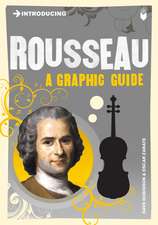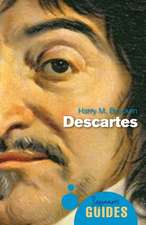Mathematics in Kant's Critical Philosophy: Reflections on Mathematical Practice: Studies in Philosophy
Autor Lisa Shabelen Limba Engleză Hardback – 6 dec 2002
Din seria Studies in Philosophy
- 9%
 Preț: 1004.96 lei
Preț: 1004.96 lei - 9%
 Preț: 1037.84 lei
Preț: 1037.84 lei - 19%
 Preț: 478.18 lei
Preț: 478.18 lei -
 Preț: 487.86 lei
Preț: 487.86 lei -
 Preț: 482.74 lei
Preț: 482.74 lei - 18%
 Preț: 1056.28 lei
Preț: 1056.28 lei - 18%
 Preț: 949.78 lei
Preț: 949.78 lei -
 Preț: 478.71 lei
Preț: 478.71 lei -
 Preț: 489.99 lei
Preț: 489.99 lei -
 Preț: 480.28 lei
Preț: 480.28 lei -
 Preț: 481.58 lei
Preț: 481.58 lei -
 Preț: 488.12 lei
Preț: 488.12 lei -
 Preț: 491.68 lei
Preț: 491.68 lei -
 Preț: 436.75 lei
Preț: 436.75 lei - 18%
 Preț: 1056.28 lei
Preț: 1056.28 lei - 18%
 Preț: 1056.63 lei
Preț: 1056.63 lei -
 Preț: 484.47 lei
Preț: 484.47 lei -
 Preț: 479.67 lei
Preț: 479.67 lei -
 Preț: 488.33 lei
Preț: 488.33 lei -
 Preț: 485.24 lei
Preț: 485.24 lei -
 Preț: 482.35 lei
Preț: 482.35 lei -
 Preț: 434.84 lei
Preț: 434.84 lei -
 Preț: 482.35 lei
Preț: 482.35 lei -
 Preț: 480.07 lei
Preț: 480.07 lei -
 Preț: 444.23 lei
Preț: 444.23 lei - 18%
 Preț: 1106.81 lei
Preț: 1106.81 lei -
 Preț: 465.69 lei
Preț: 465.69 lei - 18%
 Preț: 1054.71 lei
Preț: 1054.71 lei - 18%
 Preț: 1056.71 lei
Preț: 1056.71 lei -
 Preț: 480.06 lei
Preț: 480.06 lei -
 Preț: 356.18 lei
Preț: 356.18 lei -
 Preț: 488.33 lei
Preț: 488.33 lei -
 Preț: 223.99 lei
Preț: 223.99 lei -
 Preț: 444.93 lei
Preț: 444.93 lei
Preț: 763.39 lei
Preț vechi: 1102.32 lei
-31% Nou
Puncte Express: 1145
Preț estimativ în valută:
146.12€ • 158.77$ • 122.82£
146.12€ • 158.77$ • 122.82£
Carte tipărită la comandă
Livrare economică 21 aprilie-05 mai
Preluare comenzi: 021 569.72.76
Specificații
ISBN-13: 9780415939553
ISBN-10: 0415939550
Pagini: 190
Dimensiuni: 152 x 229 x 17 mm
Greutate: 0.41 kg
Ediția:1
Editura: Taylor & Francis
Colecția Routledge
Seria Studies in Philosophy
Locul publicării:Oxford, United Kingdom
ISBN-10: 0415939550
Pagini: 190
Dimensiuni: 152 x 229 x 17 mm
Greutate: 0.41 kg
Ediția:1
Editura: Taylor & Francis
Colecția Routledge
Seria Studies in Philosophy
Locul publicării:Oxford, United Kingdom
Notă biografică
Lisa Shabel is Assistant Professor of Philosophy at Oho State University.
Cuprins
Preface Introduction PART 1. Euclid: The role of the Euclidean diagram in the Elements 1.0. Euclid: An Introduction 1.1. Characterizing the Euclidean Diagram: Plane Geometry 1.1.1. The Definitions 1.1.2. The Postulates 1.1.3. The Common Notions 1.2. Reading the Euclidean Diagram: Warranting Implicit Assumptions 1.2.1. The Incidence Axioms 1.2.2. The Betweenness Axioms 1.2.3. The Congruence Axioms 1.2.4. The Continuity Axioms 1.2.5. The Parallelism Axiom 1.3. Countering Common Objections to the Euclidean Method 1.4. Characterizing and Reading the Euclidean Diagram: the Arithmetic Books 1.5. The Role of the Euclidean Diagram in Indirect Proof: A Special Case of Pre-Formal Demonstration 1.6. Euclid: Conclusion PART 2. Wolff: The Elementa and Early Modern Mathematical Practice 2.0. Wolff: An Introduction 2.1. Euclid's Elements in the Early Modern Period 2.2. Geometry and Arithmetic in Wolff's Elementa and Other Early Modern Textbooks 2.2.1. Wolff's Mathematical Method 2.2.2. Elementa Geometriae 2.2.3. Elementa Arithmeticae 2.2.4. Early Modern Foundational Views: Descartes and Barrow on the Relationship Between Geometry and Arithmetic 2.3. Algebra and Analysis in Wolff's Elementa: The Tools that Relate Arithmetic and Geometry in the Early Modern Period 2.3.1. Viete and Descartes: The Beginnings of Analytic Geometry 2.3.2. The Construction of Equations as a Standard Topic in Seventeenth and Eighteenth Century Textbooks 2.3.3. Constructing Equations in Wolff's Elementa 2.4. Wolff: Conclusion PART 3. Kant: Mathematics in the Critique of Pure Reason 3.0. Kant: An Introduction 3.1. Pure and Empirical Intuitions 3.1.1. What is a Pure Intuition? 3.1.2. Two Types of Mathematical Demonstration 3.1.3. Pure Intuition and the Synthetic A Priority of Mathematical Judgments 3.1.4. Objections to the Role of Pure Intuition in Mathematical Demonstration 3.2. The Schematism 3.3. Algebraic Cognition 3.3.1. Kant on the Symbolic Construction of Mathematical Concepts 3.3.2. Shared Assumptions: The Prevailing View of Kant on Symbolic Construction 3.3.3. Symbolic Construction: A New Reading 3.4. Kant: Conclusion References Index
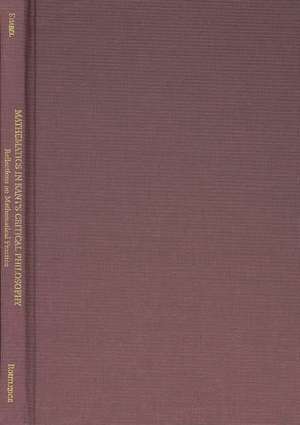
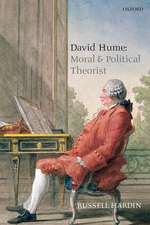







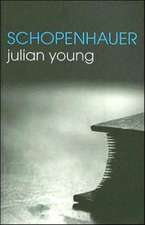
![British Empirical Philosophers (Routledge Revivals): Locke, Berkeley, Hume, Reid and J. S. Mill. [An anthology]](https://i4.books-express.ro/bt/9780415537742/british-empirical-philosophers-routledge-revivals.jpg)





